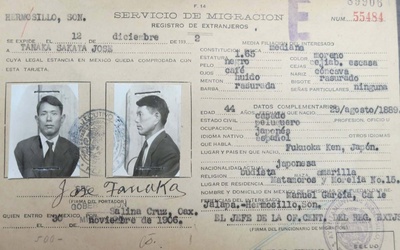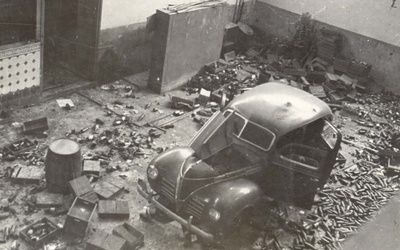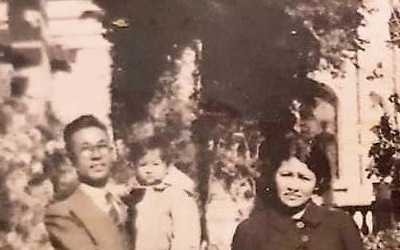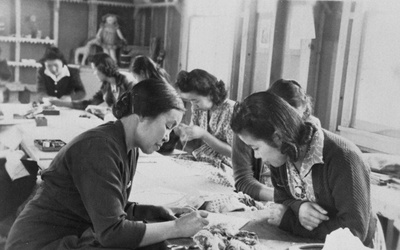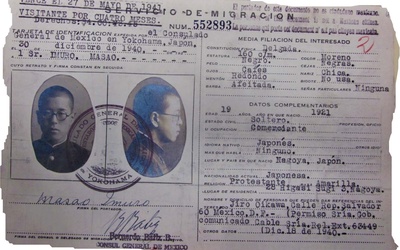
Sergio Hernández Galindo
@sergiohernandezSergio Hernández Galindo is a graduate of Colegio de México, where he majored in Japanese studies. He has published numerous articles and books about Japanese emigration to Mexico and elsewhere in Latin America.
His most recent book, Los que vinieron de Nagano. Una migración japonesa a México (Those who came from Nagano: A Japanese migration to Mexico, 2015) tells the stories of emigrants from that prefecture before and after the war. In his well-known book, La guerra contra los japoneses en México. Kiso Tsuru y Masao Imuro, migrantes vigilados (The war against Japanese people in Mexico: Kiso Tsuro and Masao Imuro, migrants under surveillance), he explained the consequences of conflict between the United States and Japan for the Japanese community decades before the attack on Pearl Harbor in 1941.
He has taught classes and led conferences on this topic at universities in Italy, Chile, Peru, and Argentina as well as Japan, where he was part of the group of foreign specialists in the Kanagawa Prefecture and a fellow of the Japan Foundation, affiliated with Yokohama National University. He is currently a professor and researcher with the Historical Studies Unit of Mexico’s National Institute of Anthropology and History.
Updated April 2016
Stories from This Author
René Tanaka - Part 1: a child in Sonora, victim of the Pacific War
July 13, 2021 • Sergio Hernández Galindo
The Japanese attack on the North American naval base at Pearl Harbor in December 1941 unleashed a fierce confrontation between two of the most powerful armies in the Pacific. However, the war immediately generated hundreds of thousands of civilian victims who were displaced or sent to concentration camps in different countries in America. These populations were made up of Japanese immigrants but also their descendants who had the nationality of the countries where they lived and who, suddenly, were considered …
Executive Order 9066 and the Persecution of Japanese Immigrants in Latin America
Feb. 19, 2021 • Sergio Hernández Galindo
In February 1942, President Franklin Roosevelt issued Executive Order 9066, authorizing the internment of more than 120,000 people living in the Pacific Coast states in10 internment camps. The order came just two months after the U.S. declared war on Japan. Of those interned in the camps, 40,000 were Japanese citizens who had settled in California, Oregon, and Washington since the late 19th century and largely worked as fishermen, farmers, laborers, or storekeepers. By the time they were sent to the camps, …
Rie Watanabe's violin and Mexico Profundo
Dec. 23, 2020 • Sergio Hernández Galindo
Rie Watanabe was barely five years old when she met violinist Yuriko Kuronuma, who was already an established violinist worldwide and alternated as a soloist in several symphonies around the world. At that time, Kuronuma was on tour in his country of birth and the little girl was in charge of giving him a bouquet of flowers during the concert he gave in the city of Yamaguchi. Rie had the opportunity to perform a piece of music before Kuronuma who …
Michie Hiramuro, Jorge Ito and Ernesto Matsumoto: Japanese-Mexicans who suffered the war in Japan
Sept. 30, 2020 • Sergio Hernández Galindo
On September 2, 1945, the Pacific War officially came to an end. Aboard the battleship USS Missouri , docked in Tokyo Bay, Japanese Foreign Minister Mamoru Shigematsu and American General Douglas MacArthur signed the Act of Unconditional Surrender of Japan. In the months before the surrender and the dropping of the atomic bombs in August, the Japanese people had already paid a high price of suffering in the face of the merciless bombings by North American aircraft that had left …
The uses and abuses of memory: ways of forgetting and remembering the persecution of Japanese communities
June 30, 2020 • Sergio Hernández Galindo
In 2012, historian John W. Dower published a book with various essays on the history and relations between the United States and Japan. The writings in this book were already widely known and were grouped under the title Ways to forget, ways to remember. Japan in the modern world . 1 The name of the book was not anecdotal or casual but had the purpose of making readers reflect on how the history and events of countries can be used …
The worst viruses: racism, lies and misinformation against Japanese immigration
May 1, 2020 • Sergio Hernández Galindo
At the end of 1910, the number of Japanese immigrants in the United States had reached nearly 80,000; in Mexico and Peru there were more than 10,000 workers in each country, while in Brazil more than 5,000 were already working. As the number of Japanese immigrants grew on the continent, racist sectors of North American society fostered hatred and persecution against immigrants. To combat the arrival of Japanese workers, these sectors did not stop spreading false news and rumors pointing …
Mitsuo Akachi: an immigrant who took root strongly in Los Mochis, Sinaloa
March 31, 2020 • Sergio Hernández Galindo
As the war between the United States and Japan approached in 1941, the states of Baja California, Sonora and Sinaloa had a population of Japanese workers that numbered around two thousand people. By then, immigrant communities were already fully established in different cities and towns and played a very important role in the production of fish, vegetables, cotton, and various commercial lines. The arrival of this large number of immigrants dates back to the first decade of the 20th century. …
1946: New Year’s at the Crystal City Concentration Camp
Jan. 3, 2020 • Sergio Hernández Galindo
The end of the war between Japan and the United States in August 1945 did not bring peace and freedom to the thousands of Japanese immigrants who lived in various countries in Latin America. This was particularly true for those who had been forcibly relocated to concentration camps in the United States and remained incarcerated. The war was over and their future was still uncertain, as they didn’t know if they would be repatriated to Japan or if they could …
Immigrants and Japanese culture in Morelos: an old relationship
Oct. 4, 2019 • Sergio Hernández Galindo
The book The Japanese in Morelos. Testimonies of a friendship 1 is a sample of the presence of Japanese immigrants and the culture of that country on Morelos soil. Alejo Ebergenyi was in charge of coordinating the 15 articles that make up this book and which are framed in a great historical arc that goes from the year 1614 to the present day. The book begins and concludes with two essays written by Guillermo Quartucci. The first, called “Hasekuraen Cuernavaca. …
Masao Iimuro: Strength and example of a community that overcame injustice and persecution
Sept. 20, 2019 • Sergio Hernández Galindo
When I met Masao Iimuro personally, in 2007, I was already aware of many details of his life. He knew that he embarked for Mexico at the end of 1940, from the city of Nagoya, where he had been born 19 years before. He had precise details of his arrest in the month of May 1942 and his subsequent imprisonment in the Islas Marías prison, in Lecumberri and in the Perote fortress, in Veracruz. Without any trial or precise accusation …

